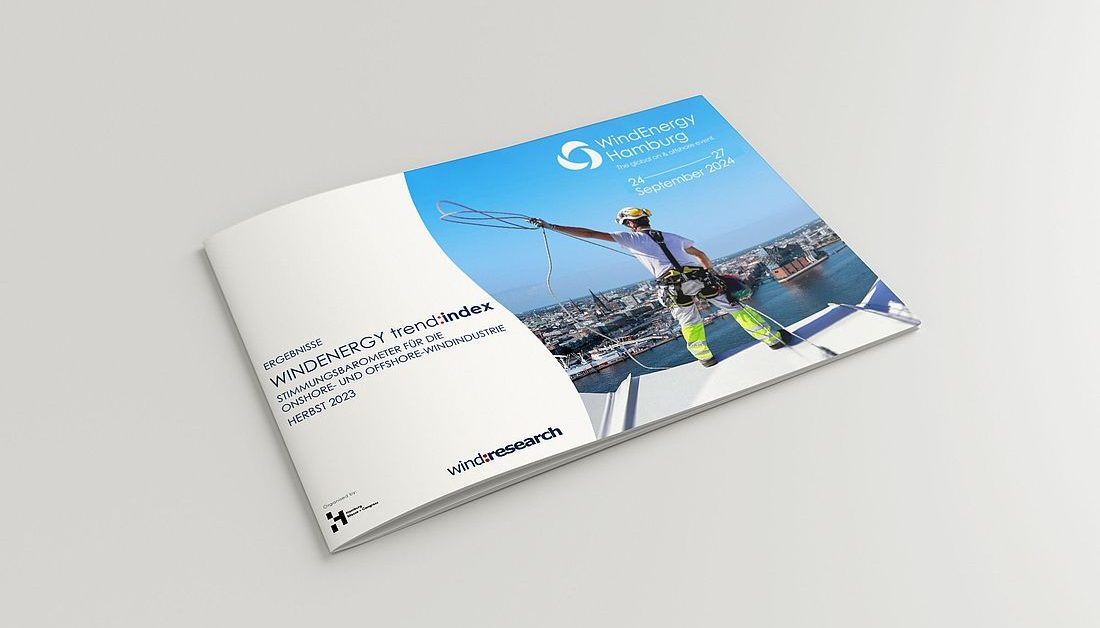These are summary results of the new WindEnergy trend:index (WEtix) which has been compiled and published at six-month intervals since 2018. It is published jointly by WindEnergy Hamburg, the global onshore and offshore wind energy event, and wind:research, the leading market research institute for wind energy. More than 500 respondents took part in the current survey between mid-September and mid-October 2023, sharing their assessments of the development of the global onshore and offshore wind industry. All in all, more than 11,000 experts have participated in WEtix surveys since 2018. The survey covers all onshore and offshore regions globally. The pre-defined market regions include Germany, Europe (including Germany), North America, Asia and Rest of World (RoW), the latter comprising Africa, Australia as well as Central and South America.
Mood has dimmed slightly in some regions but remains generally positive
Views about the development of the industry have become more complex since the last edition of the WEtix survey in spring of 2023. Assessments of the global markets remain quite positive and the mood is generally good for both onshore and offshore wind. Nevertheless, there are some slightly negative trends visible with respect to both, short-term and longer-term expectations, especially so in Germany and in Europe in general. The mood in Germany, which had improved steadily from the third quarter of 2019 until the first half of 2022, is now declining further but remains at a very high level compared to the previous years.
The overall mood remains positive: There is no industry segment, time period or region where the mood has dropped into the negative quadrant; in the context of all WEtix trend surveys conducted so far, most ratings are still in the medium to upper range. Especially the short-term assessments of the onshore wind segment have improved in both, Asia and the rest of the world. In the long term, both regions are maintaining very high levels for both industry segments.
The general economic conditions for wind energy again received mostly positive assessments. However, compared to the previous six-month survey period, some of the assessments are now trending downwards, with only Asia and the rest of the world improving slightly.
Low likeliness of expansion targets being reached amid lack of resources
While the situation of the wind industry is, by and large, seen in a positive light, the market stakeholders are expressing some concerns: for the first time, the WEtix survey asked about the impact of the global shortage of resources on the ability to achieve the wind energy expansion goals. The results speak a clear language: This WEtix reflects wide-spread concerns regarding the expansion targets. Many respondents believe the global lack of resources is hampering the expansion targets either “strongly” or “very strongly”.
Diminishing saving potential
The slight upturn in assessments of the saving potential seen in the previous report has come to an end. Quite surprisingly, the results in the present survey actually show a – pronounced – drop in assessment levels, especially for offshore wind. Costs or cost pressures might be playing a role here; the same applies to the question whether the technology has reached the end of its development potential or development lifecycle, or whether the technology can be considered as mature and stable, and thereby capable of contributing to the energy transition and the implementation of the expansion targets.
For the second time the WEtix survey asked about expectations for turbine sizes and (average) power output by the year 2030 to highlight the potential of continued technological progress. Apparently the industry distinguishes between development for onshore and offshore wind. This applies to the previous survey, as well: while the average installed turbine size expected by 2030 for onshore applications continues to increase (from 8.2 to 8.5 MW), it decreases for the offshore segment, from 18.8 MW to 18 MW. This confirms the conclusion from the previous question that no major development steps should be expected for offshore wind turbines.



























